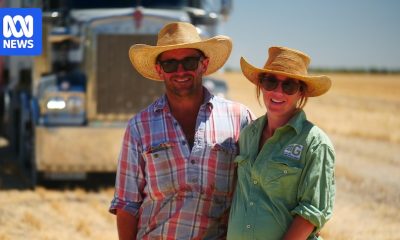Health
Australian authorities respond to coronavirus claim of airborne spread – 7NEWS.com.au
More than 200 scientists in 32 countries have penned an open letter to the World Health Organisation with new evidence. Now Australian authorities have responded.

Australias Deputy Chief Health Officer has responded to the evidence emerging of the airborne spread of COVID-19, after a group of scientists urged the World Health Organisation to update its guidance.
In an open letter to the Geneva-based agency, published on Monday in the Clinical Infectious Diseases journal, 239 scientists in 32 countries outlined evidence they say shows floating virus particles can infect people who breathe them in.
Find out more about the emerging evidence in the video above.
Because those smaller exhaled particles can linger in the air, the scientists are urging the global body to update its advice.
Deputy CMO Dr Nick Coatsworth reassured Australians that the important thing to remember is that the Australian Health Protection Principal Committee (AHPPC) pays close attention to this advice and determines whether, if at all, things need to be modified.
Let me just put a little word of caution on that particular comment of aerosolisation, he told reporters on Thursday.
We know that you can find the virus in the air around someone who is infected but those tests are largely done in laboratory conditions.
We do not necessarily know the implication of that and how readily that means the virus is going to be spread beyond the 1.5 metres that we recommend people to socially distance.
File image of a passenger wearing a protective suit and mask collecting baggage after arriving on a flight from Melbourne. Credit: JAMES GOURLEY/AAPIMAGE
We have to remember that the basic reproductive number is only 2.5 and that is more consistent with viruses that the primary mode of spread is contact and droplet rather than airborne highly infectious viruses like the chickenpox virus or like the measles virus.
So we will continue to maintain a watching brief on that but there is no proposed change to the recommendations at the moment.
He then reiterated that despite these findings, the AHPPCs position on masks has been clear.
Two women wearing masks as a preventative measure against the coronavirus disease at a bus station in Sydney on April 1. Credit: STEVEN SAPHORE/AAPIMAGE
It is that in areas of increasing community transmission where social distancing cannot be performed, that masks should be considered to be used by individuals who cannot socially distance, he said.
So what I want to emphasise on that point is that the primary protection to stop this virus from getting one – from one person to another, is, has always been, and always will be – distance.
On Tuesday, the World Health Organization, which had previously said the virus that causes the COVID-19 respiratory disease spreads primarily through small droplets expelled from the nose and mouth of an infected person that quickly sink to the ground, acknowledged the findings.
The WHOs technical lead for infection prevention and control Benedetta Allegranzi said there was evidence emerging of airborne transmission of the coronavirus, but that it was not definitive.
…The possibility of airborne transmission in public settings – especially in very specific conditions, crowded, closed, poorly ventilated settings that have been described, cannot be ruled out, she said at a briefing in Geneva.
However, the evidence needs to be gathered and interpreted, and we continue to support this.
Any change in the WHOs assessment of risk of transmission could affect its current advice on keeping one metre of physical distancing.
– With AAP

-

 General17 hours ago
General17 hours agoDriver charged after fatal alleged hit-run crash at Hillier
-

 Noosa News20 hours ago
Noosa News20 hours agoNorthern NSW growers welcome bumper grain harvest as south plagued by drought
-

 General18 hours ago
General18 hours ago‘Fortune teller’ allegedly defrauds Sydney’s Vietnamese community out of $70 million
-

 Business21 hours ago
Business21 hours agoHow to turn $50,000 into $500,000 on the ASX
